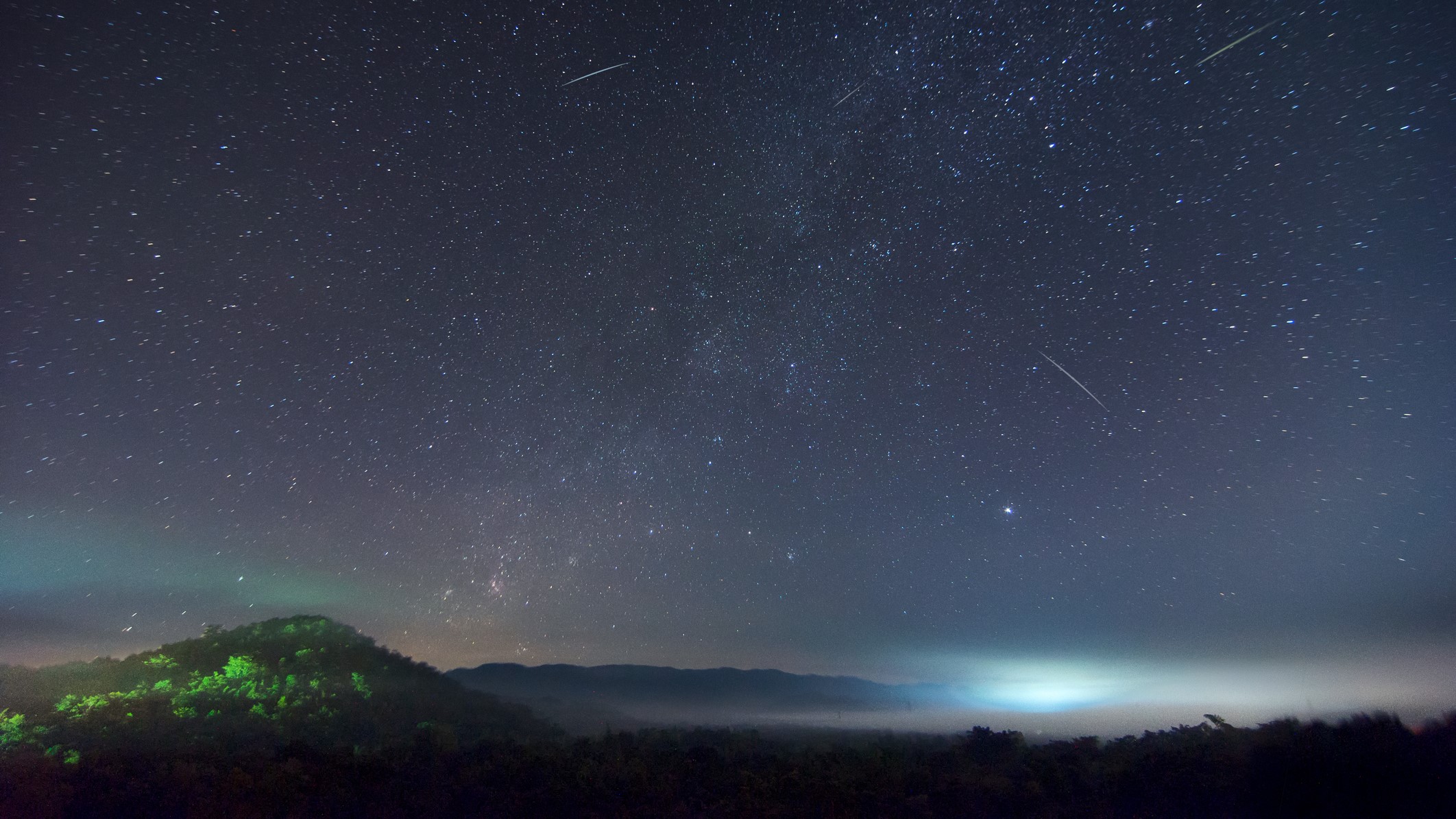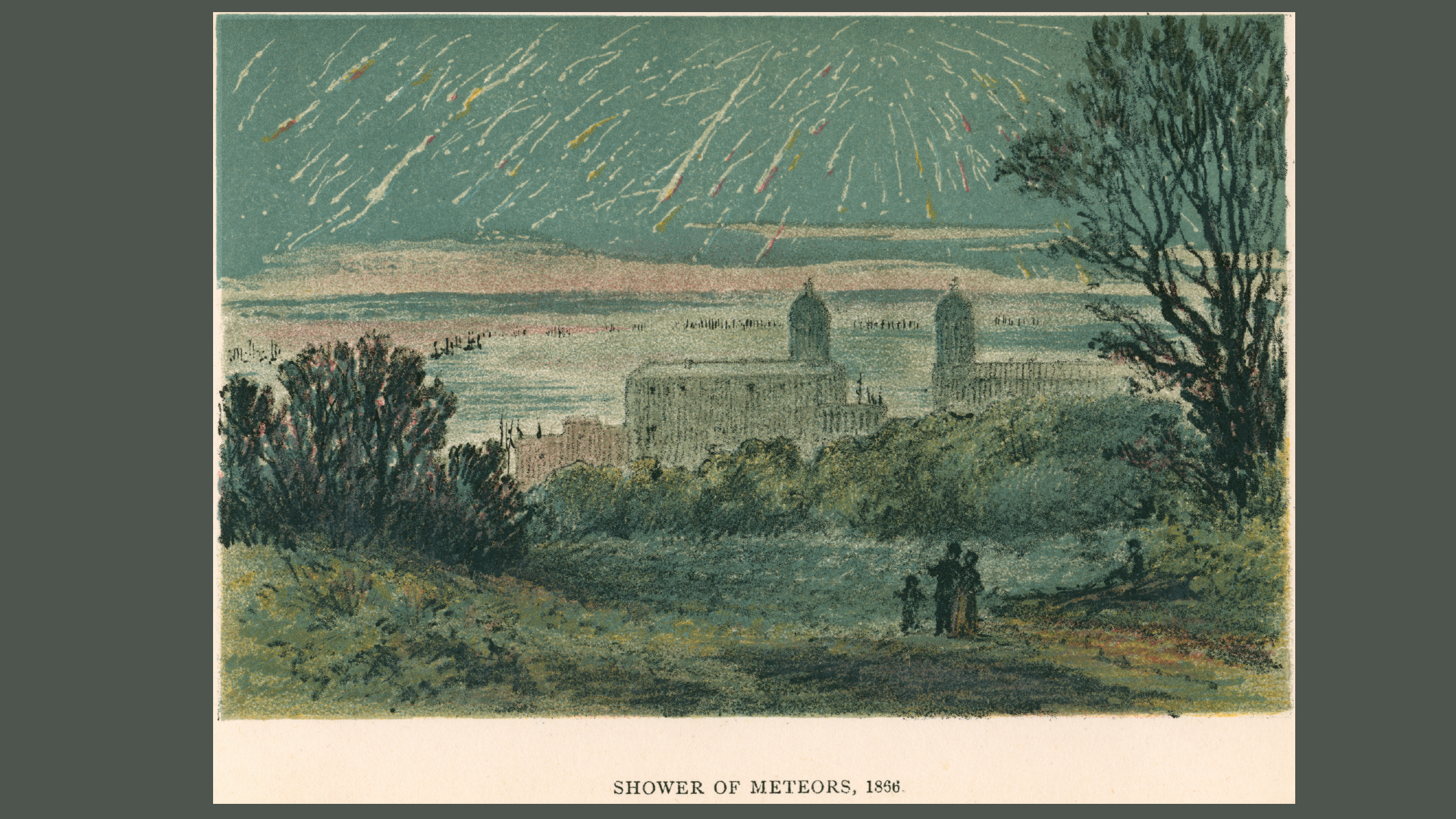Leonid meteor shower 2025: When, where and how to see it
The Leonids are a modest shower producing up to approximately 15 meteors per hour.

When: Nov. 3 - Dec. 2
Peak: Nov. 17-18
Comet of origin: 55P/Tempel-Tuttle
Zenithal Hourly Rate (ZHR): 15
(The number of meteors a single observer would see in an hour of peak activity with a clear, dark sky and the radiant at the zenith).
The Leonid meteor shower is active from Nov. 3 to Dec. 2 this year and will peak on Nov. 17.
The best time to look for the Leonids will be late on the night of Nov. 16 until dawn on Nov. 17.
The Leonids are produced when Earth passes through the debris left behind by comet 55P/Tempel-Tuttle during its highly elliptical orbit around the sun every 33 years. The Leonids are considered some of the fastest meteors, zipping through the sky at 44 miles (71 kilometers) per second, according to NASA. They can also result in impressive fireballs producing long, bright and colorful meteor streaks.
Related: Meteor shower guide: Where, when and how to see them
The moon will not interfere too much with Leonid hunting efforts this year as the new moon falls a few days after the peak on Nov. 20.
Every now and then, the shower erupts into a phenomenal meteor storm where thousands of meteors fall each hour. These storms occur every 33 years or so and the last one occurred in 2002. Meteor storms are defined as having at least 1,000 meteors per hour. Observers in 1966 witnessed thousands of Leonid meteors fall within just 15 minutes during a particularly active storm. Though the 1966 storm is a mere 'sprinkle' compared to the 1833 Leonid meteor storm that saw an estimated 100,000 meteors per hour rain down on Earth!
What causes the Leonid meteor shower?
The Leonids are caused by the debris of ice and dust left behind by 55P/Tempel-Tuttle as it passes through the solar system and orbits the sun every 33 years. It will return again in 2031.
Breaking space news, the latest updates on rocket launches, skywatching events and more!
When Earth passes through the comet's debris, the "comet crumbs" heat up as they enter Earth's atmosphere and produce impressive "shooting stars" that streak across the sky.
55P/Tempel-Tuttle is a small comet with a nucleus measuring just 2.24 miles (3.6 km) across. It was discovered independently by both Ernst Tempel and Horace Tuttle in 1865 and 1866, respectively. The letter "P" indicates it is a periodic comet — a comet with an orbital period of less than 200 years.
Where can you see the Leonid meteor shower?
Meteor showers are named after the constellation from which the meteors appear to emanate, known as the radiant. From Earth's perspective, the Leonids appear to originate from the direction of the Northern Hemisphere constellation Leo.
Right ascension: 11 hours
Declination: 15 degrees
Visible between: Latitudes 90 and minus 65 degrees
The Leo constellation can be seen at latitudes between 90 and minus 65 degrees. To find Leo, first look for the bright star Regulus and then trace the distinctive backward question mark known as "The sickle" which represents the lion's mane.
Don't look directly at Leo to find meteors, as the shooting stars will be visible throughout the sky. Make sure to look around and move your gaze to nearby constellations as meteors further from the radiant tend to have longer trains (glowing trails of debris) and are easier to spot.
To see the Leonids at their best, go to the darkest possible location, lean back and relax. You don't need any telescopes or binoculars as the secret to a good meteor viewing experience is to take in as much sky as possible. Make sure to allow about 30 minutes for your eyes to adjust to the dark.
If you want more advice on how to photograph the Leonid meteor shower check out our how to photograph meteors and meteor showers guide and if you need imaging gear, consider our best cameras for astrophotography and best lenses for astrophotography.
When is the best time to view the Leonid meteor shower?
The best time to look for the Leonids is between midnight and dawn local time according to the Royal Museums Greenwich. The meteors will peak on November 17 and will be active between Nov. 3 and Dec. 2.
Additional resources
The National Schools Observatory provides a great overview of meteor showers and how to plan your meteor spotting. If you're looking for a nice kid-friendly introduction to meteor showers, NASA has got you covered.
Bibliography
Leonid meteor shower: When and where to see it in the UK. Leonid meteor shower 2022: when and where to see it in the UK | Royal Museums Greenwich. Retrieved November 3, 2022, from https://www.rmg.co.uk/stories/topics/leonid-meteor-shower-when-and-where-see-it-uk
NASA. (2019, December 19). 55P/Tempel-Tuttle. NASA. Retrieved November 3, 2022, from https://solarsystem.nasa.gov/asteroids-comets-and-meteors/comets/55p-tempel-tuttle/in-depth/
NASA. (2022, August 1). Leonids. NASA Science. Retrieved November 3, 2022, from https://solarsystem.nasa.gov/asteroids-comets-and-meteors/meteors-and-meteorites/leonids/in-depth/

Daisy Dobrijevic joined Space.com in February 2022 having previously worked for our sister publication All About Space magazine as a staff writer. Before joining us, Daisy completed an editorial internship with the BBC Sky at Night Magazine and worked at the National Space Centre in Leicester, U.K., where she enjoyed communicating space science to the public. In 2021, Daisy completed a PhD in plant physiology and also holds a Master's in Environmental Science, she is currently based in Nottingham, U.K. Daisy is passionate about all things space, with a penchant for solar activity and space weather. She has a strong interest in astrotourism and loves nothing more than a good northern lights chase!



